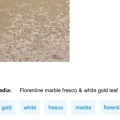From Artists Resources Wiki
This article contains info about the basics of creating and running a website for selling (mainly artwork).
Contents |
Where Should My Website Be?
There are lots of options for putting your work up for sale on the internet.
Your Own Website
Ideally you should have your own independent website with a good domain name, reflecting your own name or style e.g. www.yourname.com or www.tree-paintings.com. The following are the key reasons:
- You control and own the content of the website.
- You are free to update the site whenever you like (change prices, correct mistakes etc.).
- You can see the visitor statistics (how many per day, search phrases etc.) – this is a very useful tool of maximising your sales!
- You create a permanent place for your work on the internet that people can always visit.
Group Sites
Whilst there are thousands of group/gallery sites that you can join, even MySpace, you’ll find that some or all of the key reasons (above) for having your own independent website are not possible.
- You may have no, or limited control over updates and your part of the site.
- You may only get partial visitor stats (number of ‘hits’ is not enough, you need every detail – referrers, search terms, host names etc.).
- If you promote yourself on a group site, you are diluting the promotion of yourself by also promoting the site (and its other members).
Certainly, it can be a good source of sales being listed on another gallery/group site, but make sure you do this in addition to having your own site, plus you need to be confident you will make enough sales directly from the fee based sites to cover the costs of membership.
Free Web Space
You may be tempted to save money by using a free web host, or using part of a friends website. However, the amount of money it will save is not worth the compromises you will be making.
- Adverts, pop ups, banners for unrelated products/services ‘cheapen’ your artwork; it will not impress potential buyers.
- Again, your identity will be lost if you don’t have your own domain name.
Building The Site
How To Create The Website
Nowadays, creating a website is a lot easier and inexpensive than a few years ago. In fact it’s perfectly possible to create a professional website ready to sell in a matter of hours. See How_To_Get_An_Artists_Website for the key options for how to create a site.
It’s important to personalise your website and make sure it doesn’t look like a generic portfolio website. If you are using a template based website, then you should still be able to ‘make it your own’, perhaps with a logo, your own colour scheme etc. But remember to keep the style of your site in sympathy with your work. Do not let the site style and design detract from your art work. If in doubt simple neutral colours (black text, white background) are best.
Importantly, aside from the mechanics of creating the site, you need to consider what content you will have on your site.
Content Of The Website
The website should be clearly about yourself and your work with high quality images (see How_To_Photograph_Artwork), ample information about the work and yourself (see below) and clear instructions for making a purchase.
Subjects that you’d like to put on your website but which aren’t directly related to your work should be somewhere else on the internet e.g. if you’d like to start a general blog, use another site, perhaps blogger or wordpress.
If you have more than one aim with the website, e.g. you want to sell paintings and also publicise your creative writing, then create 2 websites, each with their own separate identity. You can then link the sites to each other.
Communicating To The Customer
Make sure that potential buyers browsing your site have all the information they need. This will include basic questions such as:
- How do they buy your work?
- What is your refund policy?
- Can you ship to Japan?
- And How long will it take?
Also, make sure they can easily contact you with any questions, by email or phone and of course, respond quickly!
Apart from the basic logistical info, you need to write about the artwork itself.
Writing About Yourself And Your Work
Selling art with images on a computer screen is very different from selling art at your studio or a gallery exhibition. Moreover be aware that your artwork is unlikely to simply ‘sell itself’. It is essential that your potential buyers feel they can understand and relate to your work and the words that accompany the images of your work will be the first port of call here. Consider writing:
- An Artist’s Statement/Biography
- What each item is about
- What motivates you
- What methods you use
- Why you are an artist
See Writing_about_your_artwork for a more detailed article.
Other Important Points
- Make sure your work is priced.
- Resist the temptation to display every piece you’ve ever created. Show off your best!
- Use only good quality images.
- Display works that have been sold, but make sure the majority is actually for sale.
- Make sure you have covered all legal regulations (see below).
Increasing Your Sales
So once you have created your site, you want to do what you can encourage more punters to buy and collect your work.
Make The Most Of Existing Visitors
Firstly, you want to be sure you’ve done everything you can with your website to help potential buyers become buyers and to make the most of people who have bought from you already. Apart from the points above here are a few extra tips:
- Write about why other people have bought/collected your work.
- Include testimonials from past buyers.
- Any notable/famous collectors should receive a special mention.
- Maintain a mailing list of people who have bought from you before.
- Give something special to previous buyers such as limited edition prints, the opportunity to buy new work before anyone else, invitations to private views etc.
Attracting More Potential Buyers
Once you’re content that you have done all you can with your existing site, you’re ready to try and increase the audience.
Search Engine Optimisation
No doubt you are probably aware of the importance of search engines. SeeHow_To_Get_Your_Artists_Site_In_Search_Engines
Monitor Your Web Stats
You should regularly be looking at your website visitor statistics, particularly if you are performing some marketing activities. By carefully observing the trends in your stats, you should be able to get an idea of what is effective and what is less effective.
Putting Yourself On Other Sites
As mentioned before, it’s good to be on other gallery sites in conjunction with having your own. You should be able to list your own website which will help increase visits and search engine visibility. However, gallery sites are just the tip of the iceberg, see Social_Networking_Websites.
Legal Issues
Selling your work on-line means that you are engaged in commerce and therefore, there will be specific trading regulations that you need to be aware of. See Selling_Online_Regulations.
Regardless of the legal requirements, you should include some standard information. Namely:
- Buying Procedure
- Shipping Info
- Returns Policy
Perhaps a FAQ to cover some extra points.






